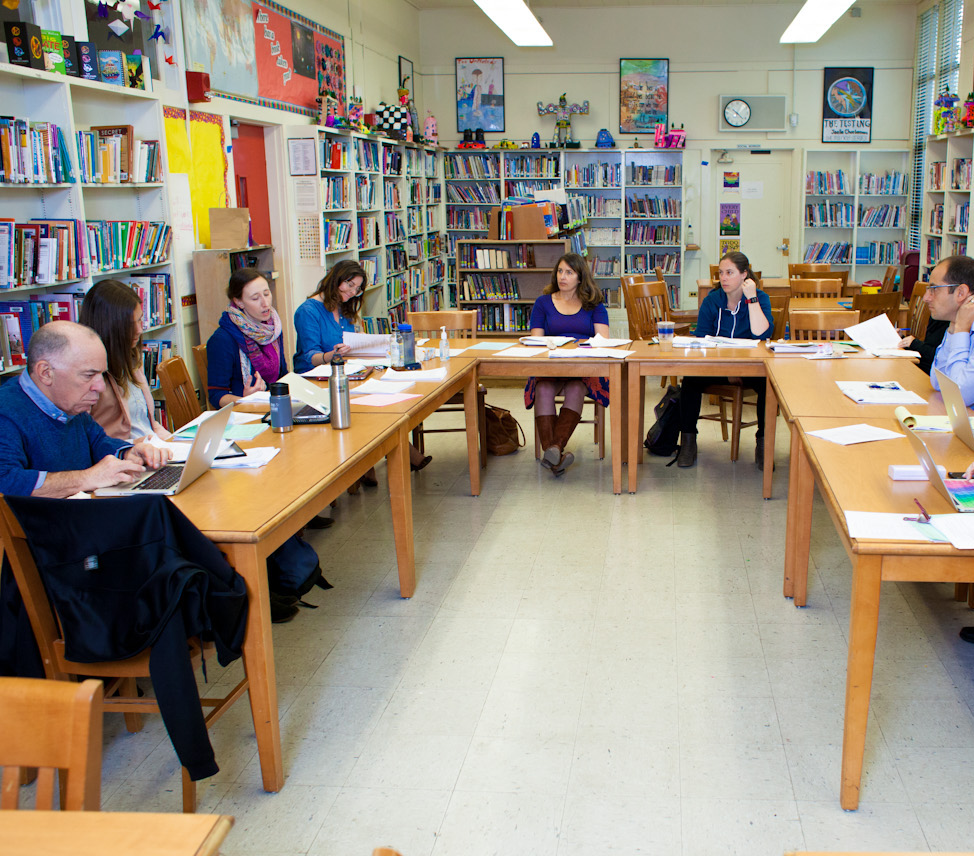A
Guidelines for Discussion
Design of the Post-Lesson Discussion
Remember that the long-term goal of the post-lesson discussion is to create a professional community that wants to continue to share and improve instruction. This is most likely to occur if the post-lesson discussion surfaces compelling ideas and leaves participants wanting to talk more.
The style of the post-lesson discussion will differ depending on the number of participants. If you are a relatively small group (say 10 or fewer), each participant may be able to have a short time to report on the student(s) they observed, with a focus on the questions and points to notice posed by the team.
For larger groups, it is advisable to have data shared out within small groups, and to have a representative of each group report out in whole-group discussion. Colored sticky notes prepared by each observer and color-coded to the team’s questions can also be used to provide feedback to the team.
- Let the lesson instructor speak first, so that they have the opportunity to explain any unexpected events or challenges before these are characterized by others – for example, places where the lesson flow was not as expected.
- Have the team members speak next, so they have the opportunity to explain the thinking and planning behind the lesson and to take collective ownership over the lesson before hearing from outside observers. It is particularly useful for the team to revisit the lesson rationale when discussing differences between what was planned and what actually happened.
- The whole group discussion should focus on the data that observers were asked to collect, using it to answer the questions posed by the team. Observers should provide specific examples from the student work and conversations they recorded; they should not speak impressionistically about the quality of the lesson. Having outside observers focus on the team’s rationale helps them focus on the team’s needs while still looking at the lesson with fresh eyes.
- The discussion should not become a ping-pong match. Team members don’t need to respond to every comment. Grouping questions and having the team answer a group of questions at once limits grandstanding and digression.
- Limit free discussion time. The best post-lesson discussion will leave participants hungry to keep talking about what they learned.
Sample Post-Lesson Discussion Agenda
This sample post-lesson discussion agenda is structured with the above protocols in mind:
| Post-Lesson Discussion Protocol | |
|---|---|
| 1 | The Instructor’s Reflections (5 min) – The instructor restates the aims for today’s lesson and comments on what was learned related to the lesson aims and plan–for example, did the lesson flow as expected, or was there anything unexpected? |
| 2 | Sharing Observational Data (15 min) – Lesson study team members, followed by other observers, present data from the lesson, focused on the questions laid out by the team and the observation points noted in the Teaching-Learning Plan. Depending on the number of observers, observations may be presented in small groups, each of which share out several key observations. |
| 3 | General Discussion (15 min) – A moderator is recommended if outside observers attend. Discussion should focus on the questions laid out by the team, or other questions such as those below. Avoid “point-volley” exchanges and serial disconnected commented. For example, if someone makes a claim, invite others to concur or disagree by sharing supporting or conflicting data.
|
| 4 | Final Commentary (15 – 20 min) – An invited outside commentator discusses the lesson’s relation to key issues in the teaching and learning of this subject matter. |
| 5 | Appreciations & Close (5 min) |
The Power of Disagreement
Educator Deborah Ball notes the value of disagreement:
Masking disagreements hides individual struggles to practice wisely and so removes a good opportunity for learning. Politely refraining from critique and challenge, teachers have no forum for debating and improving their understandings.
Colleagues offer criticism because they expect you can improve, and because there is something in your teaching worth improving on. What would really be scary is if they remained silent.


